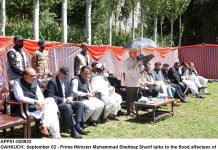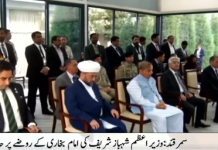The Khyber Pakhtunkhwa (KP) government has named the first-ever climbing wall built in the province after Muhammad Ali Sadpara, Pakistan’s iconic climber who lost his life while attempting K-2 winter summit recently. Chief Secretary Dr Kazim Niaz inaugurated the 52-foot high wall built at Qayyum Sports Complex at a cost of Rs10 million within a period of three months. The wall boasts three categories, including speed, technical and vertical. Speaking on the occasion, the chief secretary said the government decided to name the climbing wall after Sadpara to pay a rich tribute to him. He said such facilities will also be developed at other sports complexes in the province. Muhammad Ali Sadpara, John Snorri from Iceland and Jaun Pablo Mohr from Chile were on the mission to scale K2 in winter but lost contact after they started their push for the K2 summit from camp 3 in the first week of February. There has been no clue to their whereabouts since then. Multiple rescue operations were carried out with the help of the Pakistan Army’s helicopters and PAF C-130 aircraft but to no avail. On Feb 18, Sajid, the son of the missing Pakistani mountaineer, declared his father dead. “Pakistan has lost a great mountaineer, my father and two other climbers are no more with us,” Sajid Ali Sadpara said while speaking to the media in Skardu, Sajid Sadpara.
متعلقہ مضامین
-
Faisal Vawda submitted false affidavit in dual nationality case: IHC
-
A Woman of Great Substance
-
PM wants US-like electronic voting system in next polls
-
PPP seeks MQM’s support for Gilani in upcoming Senate Chairman Election
-
NAB has expedited corruption eradication efforts: NAB Chairman
-
KP names first-ever climbing wall after Sadpara
-
Senate election revealed PDM’s internal chaos: Firdous
-
Ministry issues e-commerce rules for goods’ import, export
-
Promoted doctors denied posting, department accused of corruption
-
PPP’s Khuhro seeks name removal from no-fly list
-
Ministers flay PML-N’s Latif for anti-Pakistan remarks
-
Pakistan became the major importer of arms in Asia












